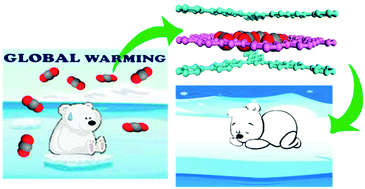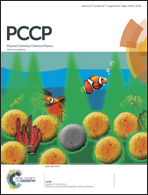Revealing the structure–property relationship of covalent organic frameworks for CO2 capture from postcombustion gas: a multi-scale computational study†
Abstract
With the aid of multi-scale computational methods, a diverse set of 46 covalent organic frameworks (COFs), covering the most typical COFs synthesized to date, were collected to study the structure–property relationship of COFs for CO2 capture. For this purpose, CO2 capture from postcombustion gas (CO2–N2 mixture) under industrial vacuum swing adsorption (VSA) conditions was considered as an example. This work shows that adsorption selectivity, CO2 working capacity and the sorbent selection parameter of COFs all exhibit strong correlation with the difference in the adsorbility of adsorbates (ΔAD), highlighting that realization of large ΔAD can be regarded as an important starting point for designing COFs with improved separation performance. Furthermore, it was revealed that the separation performance of 2D-layered COFs can be greatly enhanced by generating “splint effects”, which can be achieved through structural realignment to form slit-like pores with suitable size in the structures. Such “splint effects” in 2D-COFs can find their similar counterpart of “catenation effects” in 3D-COFs or MOFs. On the basis of these observations, a new design strategy was proposed to strengthen the separation performance of COFs. It could be expected that the information obtained in this work not only will enrich the knowledge of the structure–property relationship of COFs for separation, but also will largely facilitate their future applications to the fields related to energy and environmental science, such as natural gas purification, CO2, NOx and SOx capture, etc.


 Please wait while we load your content...
Please wait while we load your content...